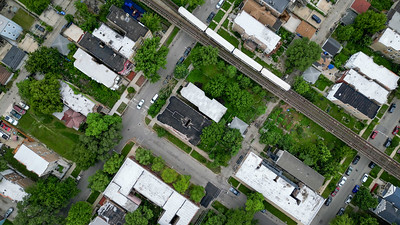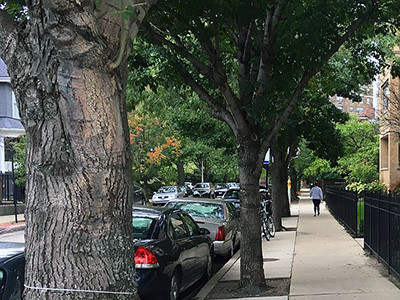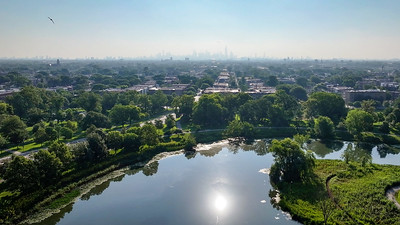


Course Description
This course introduces you to Chicago’s trees and those who advocate for them. We will learn about trees as scientifically studied entities, including how to identify the major species in the city and what benefits trees bring to individuals and communities. We will also expand our sense of life with trees, exploring a range of ways that humans understand and relate to trees, as expressed in different cultural and spiritual perspectives. Finally, will visit neighborhoods and explore city data, to better understand how and why to make the case for trees as a public benefit that should be more equitably distributed. Stand on most any Chicago street and you will see trees—trees with their leaves, their bark, their histories, their advocates, and their possible futures; the goal of this course is to help you feel more connected to the city by learning about its nearly four-million arboreal residents.
Students who successfully complete the Chicago Quarter will be able to:
- Integrate, in writing, the academic content with student experiences engaging with Chicago;
- Articulate the connection between course content and DePaul University’s mission; and;
- Use Chicago resources in their coursework.
Readings & Media
City of Chicago. (2022, Dec. 13). Tree equity working group year-end report.
Completely Arboratrary. (2023, Nov. 9). “Invasion of the gaudy statures (Norway Maple).”
Custic, M., & Redlinski, I. (2020). “Common trees of the Chicago region.” Field Museum, Chicago Region Trees Initiative and The Morton Arboretum.
Galle, N. (2024). Saving trees on the paper trail. In The nature of our cities: Harnessing the power of the natural world to survive a changing planet. HarperCollins.
George, Z. S. (2022, July 13). “Can planting a trillion new trees save the world?” The New York Times.
Haskell, D. G. (2018). Callery pears. In The songs of trees: Stories from nature’s great connectors (Reprint edition). Penguin Books.
Kimmerer, R. (2013). Excerpts from Braiding sweetgrass: Indigenous wisdom, scientific knowledge and the teachings of plants (pp. 3–10, 39–47, 105–117, & 141–155). Milkweed Editions.
Konijnendijck, C.C. (2023, Sept. 7). Understanding the social implications and human health effects of urban trees.
Koransky, L. (2022). Excerpts from Drawing trees: Trace thirty different trees and their leaves, branches, and seeds. Princeton Architectural Press.
Morton Arboretum. (2021). “2020 Chicago region tree census report.“
Pope Francis. (2015). Laudato Sí.
Tekiela, S. (2006). Trees of Illinois field guide (Illustrated edition). Adventure Publications.
Rogers, K. (2023, January 11). “Establishing urban forests should be our legacy.” TEDxVarese.
Roudavski, S. (2020). Respect for old age and dignity in death: The case of urban trees. In Proceedings of the Society of Architectural Historians Australia and New Zealand: 37, What If? What Next? Speculations on History’s Futures (pp. 638–352).
Turner-Skoff, J. (n.d.). The scientific benefits of trees for people. Chicago Region Trees Initiative.
Shared texts (brief poems we’ll engage with together during class)
- Barrax, G. Sr. “I called them trees” and “To waste at trees“
- Gay, R. “To the fig tree on 9th and Christian.”
- Leach, A. “When trees dream of being trees”
- Limón, A. “Of roots and roamers”
- Morrison, T. “When great trees fall”
- Olivarez, J. “YOU MUST BE PRESENT“
- Olzmann, M. “Letter to the person who carved his initials into the oldest living longleaf pine in North America”
Assignments
Street Trees of Chicago Identification Log & Test: Honeylocust. Green ash. Ginkgo. Catalpa. Hackberry. Norway maple. You’ll demonstrate your knowledge of these and other of Chicago’s common street trees via an ongoing observation log and a short identification test that is completed in the field.
Essay with Images: Why and How We Should Value Urban Trees: In this approximately 5-page essay, you will reflect on the various rationales we have learned about why we should value urban trees (and nature more broadly), explaining 3–4 of these ideas to a general reader and also making suggestions about how to value urban trees. Your essay should substantively engage at least four of our readings/texts and include images generated during your time in the course, which may be photographs or drawings.
Tree Equity Report: For this team project, you and a classmate will research a community area in Chicago, producing a 5-7-page (single-spaced) report that assesses whether this neighborhood should be a priority for tree equity efforts by summarizing data from a site visit to the neighborhood, a conversation with a member of the community, and a range of online demographic, socioeconomic, health, and tree canopy data.
Class Engagement: You will complete regular informal writing tasks, including reading questions to prepare for class and reflections related to field trips. Your class engagement grade combines these tasks and your participation and engagement during class sessions, including Honors Practicum.